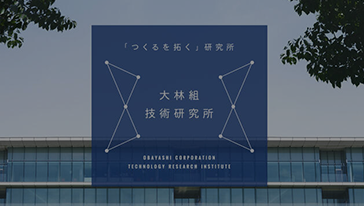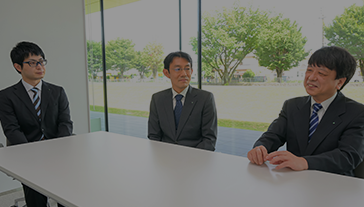
Tunnel Construction Professionals
Technology Research Institute
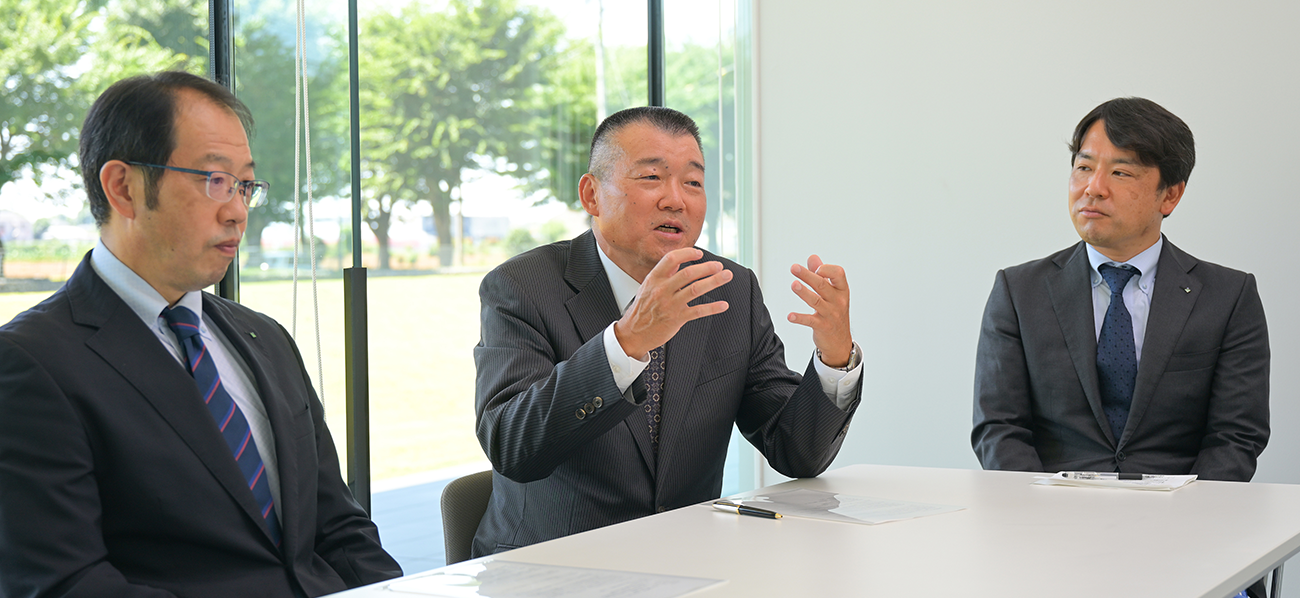
Senior Chief Engineer of Numerical Analysis, Geotechnical Engineering DepartmentShigehiko SUGIE
Senior Chief Engineer of Excavated Earth and Sand, Geotechnical Engineering DepartmentYuki YAMADA
Principal Engineer of Materials, Natural Environmental Engineering DepartmentToshihiko MIURA
“Capturing the essence of situations for a real contribution”
Reduction of environmental load
SUGIE:
I work on computerized numerical analysis in predicting ground deformation and groundwater fluctuations during construction work. Shield tunnel construction sites are often near public facilities and residences, so appropriate countermeasures are crucial not to interrupt people's lives and economic activities. Numerical analysis is useful in comparing and verifying the effects of multiple measures and selecting the best countermeasure work.
I first got involved in shield tunnel construction in the late 1990s. It was about building a new subway line in Tokyo, which turned out to be extremely challenging, since large shield tunnels of different diameters were to be jointed underground in close proximity to each other at two locations, one above and one below. A three-dimensional numerical analysis was conducted to evaluate the stability of the sand and gravel ground around the underground joints and the possibility of collapse. Later, I was also involved in the numerical analysis for the development of Obayashi's proprietary URUP Method® (a shield tunneling method that allows the machine to launch directly from the ground and return to the ground).
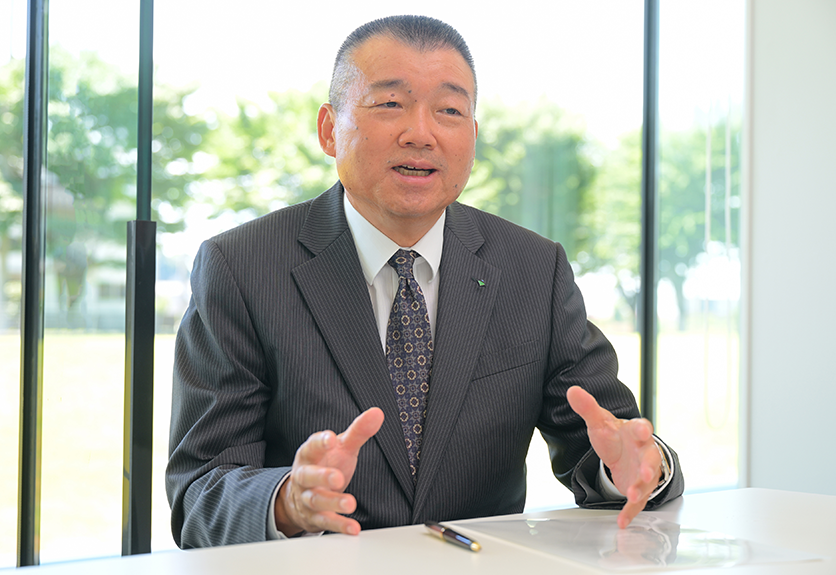
Shigehiko SUGIE, Senior Chief Engineer of Numerical Analysis,
Geotechnical Engineering Department
YAMADA:
My field of research is shield excavation soil. While shield machines move ahead, they cover the ground in front, making it unseeable. But the ground needs to be moderately soft for excavation, so we evaluate the soil coming out from the machine to find out the kind of ground being excavated at the moment and whether or not the work is successful.
In most shield tunneling, air bubbles are injected to soften the soil for easier excavation. Adjustment of their amount is crucial since it greatly affects the softness of the soil and the cost of construction. Another important factor is the handling of the large amount of excavated soil. The soil may be used for airports or coastal reclamation if it meets the standard.
MIURA:
I develop construction materials and study their environmental impact. For example, foaming agents for shield tunnel construction are surfactants and man-made, so we need to check its environmental impact. One of the criteria for our inspection is “fish toxicity.” If there is fish toxicity in the material to be used, we analyze how long it will last and when it is decomposed as an organic substance. We develop materials with lower fish toxicity or quicker decomposition according to the needs.
I also develop materials to change soil property. During shield construction, the machine ejects soil rapidly and the soil condition needs to be controlled, softening it for transportation or hardening it to improve sturdiness. Also, we select the optimal materials for each construction method, collaborating with the staff at the head office and the construction sites.
Collaboration among teams to attain goals
YAMADA:
For technical development, all staff needs to share the common objective. I remember one summer when we decided to conduct an experiment with air bubbles outdoors. To prevent the soil from drying out in daylight, everyone gathered at midnight for the experiment. It can be tough at times, but I find it rewarding to work together to advance our research.
These days, our young members, after six months to a year at the institute, are assigned to construction sites for hands-on experience. We believe that getting a good grasp of the actual construction process is crucial in technical development.
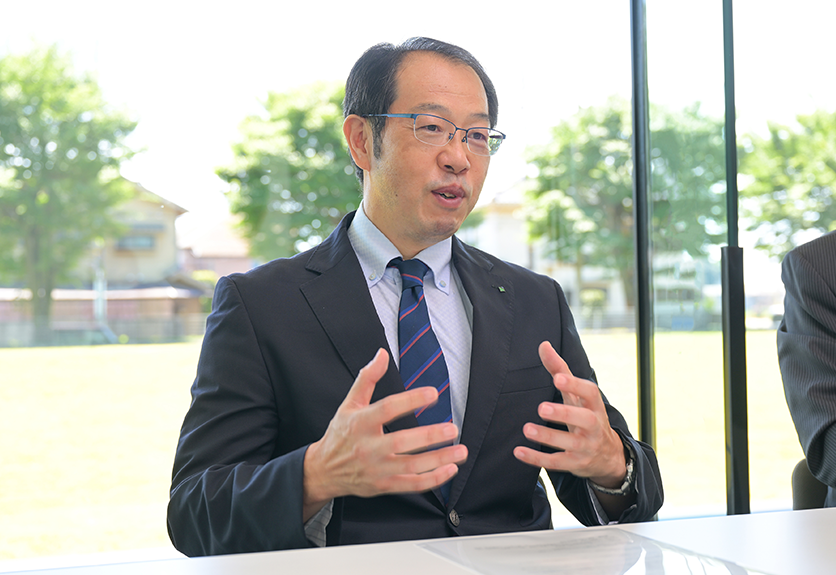
Yuki YAMADA, Senior Chief Engineer of Excavated Earth and Sand,
Geotechnical Engineering Department
SUGIE:
Among the tasks of the institute, especially in support work of construction projects, we work with many departments outside the institute. For bidding, designing and planning of the projects, we collaborate with the sales, design and engineering departments. We also share information with the construction offices once construction begins.
The works related to shield tunneling has become extremely complex in recent years, such as the widening of underground junctions of deep underground roads. To simulate the process by computer and formulate ground collapse countermeasures, close communication with the staff of design department and the shield engineering department is essential. As a civil engineer in the research department of a general contractor, I find it a real pleasure to work with staff outside the institute as a team to realize the goals.
MIURA:
The strength of Obayashi's Technology Research Institute is a good relationship with the staff at construction sites. The knowledge of both sides is often integrated because there is common ground in the nature of things. I find it interesting that such new discoveries can be applied to research, they can ultimately benefit the work at construction sites. I would like young researchers to be aware that for useful research and development, they must be familiar with the current situations and issues at construction sites.
Emphasis on universality with awareness of current trends
SUGIE:
As U.N. member states are striving to achieve the Sustainable Development Goals (SDGs) by 2030, Obayashi is also undertaking various initiatives with technological innovations in shield tunneling reducing environmental impact and saving energy. In numerical analysis of the ground, evaluation of the physical properties of the ground and advancement of mechanical models to improve prediction accuracy will be crucial.
Obayashi places importance on training its research staff. Currently, one of our junior researchers is at Imperial College in the UK, studying new analytical methods such as the particle method and the distinct element method (a method for analyzing large ground deformations). I hope that our junior researchers will try new styles of design and field support, introducing new analysis methods for ground phenomena in addition to the existing analysis methods.
YAMADA:
I am currently in charge of technology development in relation to shield construction methods. At Obayashi, the technology for automatic operation of shield machines has advanced, but the evaluation of the excavated soil remains mostly manual, often with staff touching the soil by hand. We are considering the automation and mechanization of the evaluation with cameras and AI. It may be difficult to evaluate the machine alone, but it has the advantage of operable 24 hours a day. At least, it will be helpful in human judgment and staff should also be able to use the extra time for other tasks. We will strive to develop technologies to reduce labor and improve efficiency at construction sites.
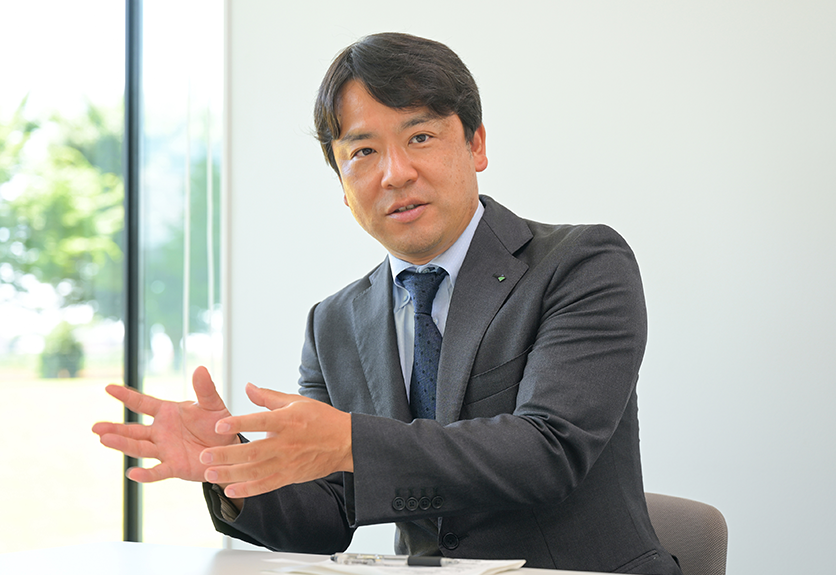
Toshihiko MIURA, Principal Engineer of Materials,
Natural Environmental Engineering Department
MIURA:
Needs for environmental considerations change over time. If we are aware of the changing needs of the society, we can start new research ahead of other companies. At the same time, it is important to grasp the universal essentials. As a member of Obayashi, I would like to contribute to the society by proposing "what is truly important," without being overly influenced by trends. It is difficult to know exactly what is beneficial or harmful for the environment, so I should never stop learning.

